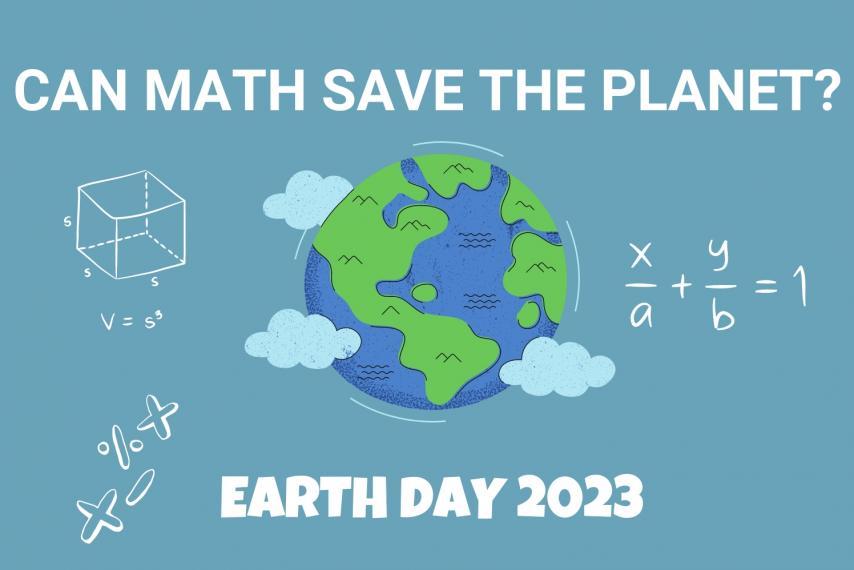Can Math save the planet?

Not alone, but... Math can do some cool things to help us. So many of us struggle with math and fail to see the beauty of patterns, and the power of big data. While the wicked problems of today cannot be solved by math alone, it plays a critical role in a multi-disciplinary approach to finding the solutions we need.
Think modelling. Mathematicians and statisticians work with domain experts to develop models for complex processes in nature, like the movements of the tide, species population growth in a region, or to measure the amount of rainfall or carbon emissions in the air.
What about probability? Working with historical data, math experts can develop models to predict the state of a specific process in the future, such as animal populations. This is particularly helpful in relation to climate change projections. Speaking with Dr. Ayesha Ali, a professor in the Department of Mathematics and Statistics, led to a good example of this approach, “One might use data on the changes in the geographical range of butterfly species over the years as a function of climate variables and the seasonal plant species they forage on. Probability data can help where the butterfly species will range next.” Using and understanding probability, we can also predict the likelihoods of heatwaves, floods and weather patterns (and so many more things). This can help farmers and policymakers help plan for the future.

Mathematicians also play a key role in empowering machine learning; a growing technology being used across multiple sectors. The Food and Agriculture sector can use machine learning to understand how climate change impacts where we grow our food. Dr. Ali, alongside Dr. Khurram Nadeem are co-advising PhD. student Aman Bhullar, “who has developed a multilayer perceptron (machine learning) model that combines crop yield census data with satellite data on soil-climate-landscape variables to model the suitability of Canadian lands for growing several crops, such as oats, barley, corn, and soy.” Future applications of this model will predict crop land suitability across Canada under the Paris Climate Accord projections.

One thing we do not seem to have a shortage of is information. Innovative technology is advancing quickly to capture the increasing amounts of data. But how do we understand it all? If we want to tackle pollution, protect biodiversity, control the next pandemic, monitor melting ice and understand our oceans, we must rely on big data and equations. We need math and statistical methods to make sense of it all.
Researchers, analysts, statisticians, data scientists and bioinformaticians are in high demand. They can find work in academia to propel research forward, but they can also fill vital roles for industry, government and not-for-profit sectors. By working with computer scientists, engineers, economists, physicists and biologists, mathematicians and statisticians can and will continue to play a leading role on the global stage to help protect the planet.